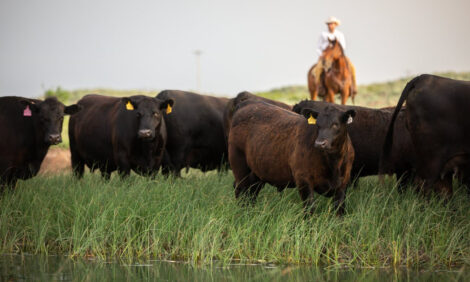



Excessive Calf Death Loss Is Serious Warning
If warning flags are flying high, one needs to ask if there is a fundamental flaw in management, says Kris Ringwall, Beef Specialist with North Dakota State University. The death of a calf is never good news. Producers live in the world of dollars and cents, income and expense and profit and loss. However, the need to remove a dead calf is never something a producer wants to do.
Regardless of the reason, disappointment always is evident as a new mother follows the dead calf to the gate. Perhaps the gate simply closes, but more than likely, the cow follows through as well, only to be moved to a holding pen.
If one was to ask what a typical level of death is, the current benchmark for those producers who utilise the CHAPS program through the North Dakota Beef Cattle Improvement Association is 3.26 percent. This means three to four dead calves per 100 cows. Regardless of inputs and desires, some calves meet an unexpected outcome.
The most common notes one writes for reason of death are stepped on, deformed, frozen, death while calving, birth difficulty or simply dead. If the calf stands or there is evidence that the calf was up and about, the most common notes written are dehydration, no milk, hypothermia, abandoned, stepped on or poor mother.
Less than one per cent of the cows abort their calves. Occasionally a calf is found that was not full- term. These calves seem to be more of a function of aggressive handling or ice slippage because their arrival often will coincide with recent workday handling calves or follow exposure to ice.
With the cow vaccination protocols available today, seldom does one see the incidence of individual disease outbreaks that were much more common in years past. However, one should never let one’s guard down because the exposure to disease or nonvaccinated herds will create the increased risk of a disease.
During the first two weeks of a calf’s life, producers will experience an increased incidence of scours or other disease-generating organisms in their calves. Many times, calf survival goes back to the first day of birth and is dependent on getting colostrum or the cows’ first milk consumed quickly and efficiently. Failure to nurse quickly will increase the incidence of calf disease susceptibility in early life. The result is more work and more dead calves.
The calving book notes then start indicating dehydration and scours along with a death date. Calves in close contact with each other (cross-exposure) certainly enhance the spreading of health issues. Space, dry bedding and sunshine become essential for a return to normal calving operations.
As producers, some questions need to be processed. Is my operation normal and am I being overly concerned or not concerned enough? If three to four dead calves per 100 cows are typical, am I above or below normal? Many producers hardly lose a calf, but caution flags need to start waving once additional dead calves start to show up in the calving book above what one would call typical.
All producers should have a strong relationship with their veterinarian and be prepared to obtain a timely evaluation of sick or dead calves to get a definitive diagnosis of the problem. Keep in mind that many times a specific diagnosis is elusive because many symptoms may come from multiple sources, so using a good herd health protocol is essential.
Use the dead calf as a reminder to set an appointment with your veterinarian and ask questions on improving the herd’s overall health program.
There is another thought that is more abstract but just as important. Most calf loss is related to management. My apologies to those who are offended, but it is true. Occasionally, regionalized epidemics strike without warning, but they are the exception. Living organisms, such as cows and calves, are designed to live. However, the environment needs to be hospitable and compatible with life.
If warning flags are flying high, one needs to ask if there is a fundamental flaw in management. Is the problem too many cows, not enough space, not enough help, not enough bedding, not enough feed, not enough time or not enough something or other? These are all symptoms of people and management. If the warning flag is flying, some self-assessment is critical.


